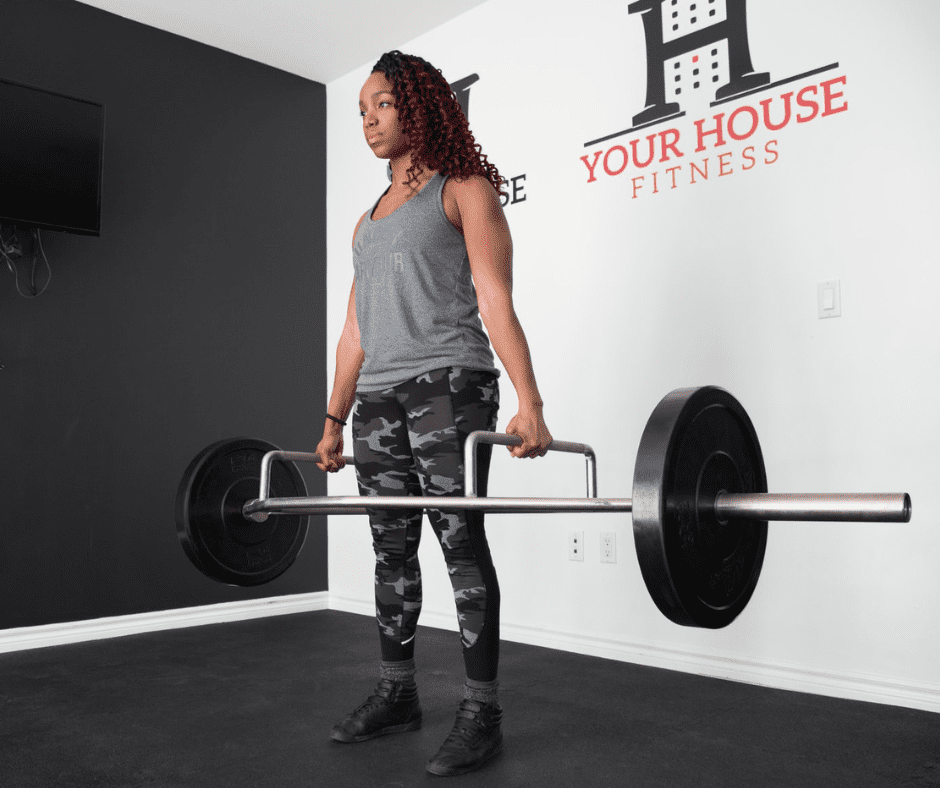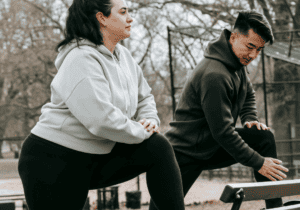11 Tips to Take Your Strength Training Activities to the Next Level
If you’re new to strength training, welcome! Whether you’re new or have been doing strength training activities for a while, applying each of these tips will help you take it to a whole other level.
Photo by Jonathan Borba on Pexels
1. Find your why
This may not seem as important as some of the more practical tips, but knowing why you decided to start strength training (or any type of exercise for that matter) will help keep you motivated and engaged.
You might have a specific goal, want to get stronger for a hobby, or just be looking to incorporate more movement into your life. Whenever you feel unmotivated, remind yourself of your why!
2. Have a plan
Before you start your workout or walk into the gym, create a plan for the day. Consistency is important in strength training, so throwing together random movements you remember probably won’t help you reach your goals. You can always adjust your plan if necessary, but having one in the first place will help you stay focused during the workout.
For long term strength, you want to follow a program for your workouts. You can write one yourself, find/buy one online, or hire a personal trainer to make one for you. Having a program helps you keep track of your movements and have a plan for each workout.
Building strength over time needs progressive overload, meaning you repeat and slowly increase the work your muscles are doing (such as more weight or reps) to make them stronger, and a program helps you do just that.
3. Keep strength training activities simple
If you’re looking to gain functional strength, meaning strength that can help you with your daily life activities or hobbies, you’ll want to focus on compound/full body movements. Movements like squats, hinges, pushes, pulls, and carries should be central to your strength training program. Then add in accessory movements depending on your specific goals.
If you think you’ll get bored, don’t worry - there are many different variations of those same basic movements for you to play around with! Strength training isn’t a circus act of crazy complex moves–even if you saw it on Facebook or TikTok–it’s about repeating the same movements over time.
4. Focus on quality over quantity
The quality of each rep is more important than how many you do or how much weight you’re lifting. Fewer reps that have great form and are fully engaged can be way more effective than more reps done poorly. The same goes for using heavier weights - sometimes less is more!
Building up weight and reps takes time and consistency, and sometimes involves leaving your ego at the door.

Photo by Sergio Pedemonte on Unsplash
5. Find what strength training activities work best for your body
There are many, many different ways to approach strength training. For example, you could train for endurance, maximum strength, muscle growth, balance/stability, movement strength, and even cardio.
Aside from your training goals, you can also adjust your program to fit your body. Everyone’s body moves differently, and you will find how you enjoy moving and what feels good.
6. Every strength training movement is a core movement
Your core muscles (not just abs!) stabilize your entire body and connect it together, so you want to practice engaging your core for all your strength training movements.
Even when you’re doing something small that doesn’t seem to use your core, it’s probably working without you even realizing it. Bracing through your core will make your movement better and help you lift more weight as you progress.
7. Try training barefoot

Photo by Yan Krukov on Pexels
If your feet allow, try some strength training activities barefoot. Your feet are the base of your whole body and affect everything up the chain. When you wear shoes with a lot of cushioning, you lose a lot of stability and connection with the ground.
Training barefoot or with minimal shoes strengthens your feet and makes a huge difference in your ankles, knees, hips, and even spine. It might feel weird at first, but after you get used to it you’ll find that you’re much more stable and maybe even able to lift more weight.
(*) If you’re looking to try minimal footwear check out Xero Shoes and Vivobarefoot, or ease into it with zero-drop Altras.
8. Recovery is important
Recovery is as important in a strength training routine as actually lifting the weights!
Lifting weight essentially damages your muscles, and they take time to repair. Doing one movement too frequently can overtrain those muscles and never give them the opportunity to recover, which is when the growth happens.
Be sure to rest specific muscle groups, but also take full days off of training in the form of active recovery or rest days. If you’re super sore after your workouts or feel tired a lot, it might be time to alter your program or add an extra rest day.
In your program, plan for deload weeks with less weight to give your body more time to adapt. Sometimes your body might need a longer time off, especially if there are stressors in other areas of your life. It’s okay to take breaks!
9. Do your warmups
Just as recovery is important, so is warming up before you train. Gently easing your muscles into movement helps prevent injuries and allows you to move better.
Try foam rolling, mobility movements, dynamic stretching, light cardio, or movements similar to the ones you’ll be training during your workout to prepare your body.

Photo by Andres Ayrton on Pexels
10. Don’t train through the pain
Strength training doesn’t mean keep going if something feels uncomfortable. If you feel pain or discomfort somewhere in your body during a workout, stop and reassess.
Switch to a different movement for the time being or alter the movement you’re doing so it isn’t painful. If you can, figure out what’s causing discomfort so you can take steps to improve it.
Although sometimes rest is an appropriate remedy, the discomfort could also bring your attention to an area that needs more strengthening.
11. Track your workouts
If for no other reason than to look back and see how far you’ve come, log your workouts.
Using a physical notebook or an app, keep track of things like what movements you do, what weights you use, and how many reps you do. Over time, this gives you a sense of what your body is capable of and what weights you can handle.
Even if your strength training program tells you what to do, you might change it depending on how you feel that day and want to record those changes.
Each of these tips could be talked about much more in depth, but the goal is to give you some ideas to ponder without completely overwhelming you! If you’re looking for more information there are many online resources and books about training, or you could seek out a strength coach to learn from.
Always remember that everyone’s strength training journey is individual and unique, and you belong here!
Sarah Siertle, a strength and movement coach, specializes in introducing people to strength training and works to make the fitness world a more inclusive place. She has been a movement instructor since 2012 and also teaches swing dance around the US. Find other articles written by Sarah on her coach profile. Let Sarah help you get STRONG so you can take advantage of life’s adventures!








